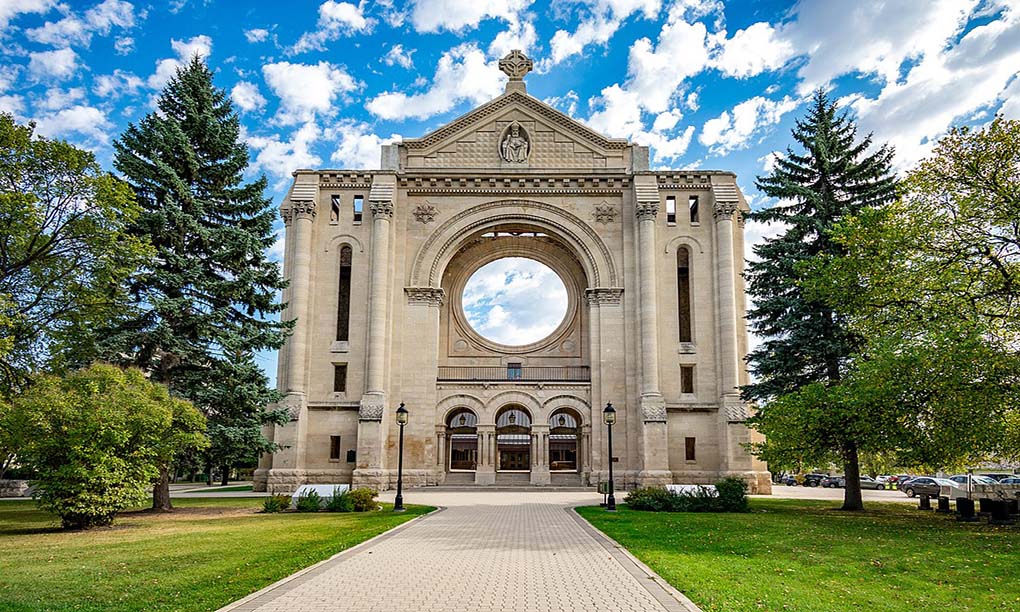I’ve had the privilege of traveling the globe, and each journey is a unique chapter in my ever-evolving story. Immersing myself in the historical tapestry of city streets is an undeniable allure. Winnipeg, the capital of Manitoba, Canada, is one such place where the past resonates at every turn. I invite you to join me on a voyage through time as we unearth the top historical gems that Winnipeg has to offer. From its Indigenous roots to the era of fur trading and beyond, this city has a captivating tale to tell. I’ll take you deeper into each site, sharing my personal experiences and insights along the way.
Chapter 1: A Stroll through Yesteryears
Winnipeg’s rich and layered history unfolds before your eyes, offering an array of historical sites that span Indigenous heritage to early European settlement. As I embarked on my historical expedition, I couldn’t help but be transported to bygone eras.
Chapter 2: The Forks National Historic Site
The Forks National Historic Site stands as one of Winnipeg’s most iconic historical landmarks. This locale, where the Red and Assiniboine Rivers merge, has served as a meeting point for Indigenous peoples for over 6,000 years. Here, cultures converged, trade thrived, and history was etched into the very soil. Strolling along the riverbanks, I could almost hear the clamor of fur traders and envision the bustling fur trade posts that once stood, where Indigenous communities and European traders exchanged goods, ideas, and stories.
The allure of The Forks doesn’t solely lie in its historical significance but also in its vibrant contemporary atmosphere. Today, it’s a vibrant marketplace where locals and visitors congregate to celebrate the city’s diverse culture. Amid the market stalls, artisan shops, and open-air performances, I sampled bison burgers and bannock, feeling as though I was savoring not just culinary delights but also a slice of Winnipeg’s rich heritage.
Chapter 3: St. Boniface Cathedral

Winnipeg’s history is intricately woven with its French-Canadian heritage, and the St. Boniface Cathedral stands as an architectural testament to this connection. Dating back to the early 19th century, this historic church has borne witness to pivotal events in the city’s past, including the Red River Resistance led by Louis Riel. The cathedral’s splendid architecture and tranquil surroundings make it a must-visit for history aficionados.
Stepping into the hallowed halls of St. Boniface Cathedral was akin to stepping into a time capsule. The grandeur of its stained glass windows and the hushed ambiance evoked a sense of reverence. I couldn’t help but reflect on the tumultuous periods during which this cathedral played a central role in shaping the cultural and political landscape of the region. As I wandered through the adjacent cemetery, I beheld the final resting places of prominent figures from Manitoba’s history, including the resting place of Louis Riel himself. It was a poignant reminder of the intricate history that unfolded here.
Chapter 4: Lower Fort Garry National Historic Site
For a glimpse into the fur trade era of Canada’s history, a pilgrimage to the Lower Fort Garry National Historic Site is imperative. Situated just a short drive from Winnipeg, this meticulously preserved fort whisks visitors back to the 19th century. I delved into the various edifices, engaged with costumed interpreters, and gained profound insight into the lives of fur traders and Indigenous communities during this transformative epoch.
What truly struck me about Lower Fort Garry was its immersive quality. It wasn’t merely about observing history from a distance; it was about stepping into the shoes of those who lived it. Conversations with interpreters, donned in period attire, allowed me to pose questions and acquire insights into the triumphs and tribulations of life during the fur trade era. The blacksmith’s forge, the bustling kitchen, and the vibrant trading post all materialized before my eyes, making history palpable.
Chapter 5: Manitoba Museum
If you seek a comprehensive odyssey through Manitoba’s history, the Manitoba Museum is your compass. I dedicated hours to exploring the exhibitions that unveiled the province’s past, from the Ice Age to the fur trade and beyond. The museum’s immersive displays and interactive exhibits animated history, making it come alive in front of my eyes.
The Manitoba Museum is a repository of knowledge, a place where inquisitiveness thrives. I found myself traversing through epochs, from the era of prehistoric creatures that once roamed these lands to the challenges encountered by early settlers. The Nonsuch Gallery, featuring a painstakingly recreated 17th-century ship, transported me to the age of exploration and trade. It served as a reminder of the interconnectedness of the world, even in the remote corners of Canada.
Chapter 6: Dalnavert Museum
For a glimpse into the Victorian era that once graced Winnipeg, I embarked on a visit to the Dalnavert Museum. This exquisitely restored heritage home once belonged to Sir Hugh John Macdonald, the son of Canada’s inaugural Prime Minister, Sir John A. Macdonald. Stepping into this elegant mansion felt like a journey back in time, as I admired the period furnishings and delved into the nuances of Victorian life.
Dalnavert Museum offered a window into the opulence and etiquette of the Victorian epoch. The ornate wallpapers, intricately carved furniture, and the elegant dining room all testified to an era characterized by refinement. What fascinated me most was the juxtaposition between the grandeur of the house and the challenges faced by those less fortunate during that time. It served as a poignant reminder that history encompasses not just the lives of the elite but also those of everyday individuals whose stories have indelibly shaped the course of events.
Chapter 7: The Exchange District
Winnipeg’s Exchange District stands as a living testament to the city’s early 20th-century history. This designated National Historic Site boasts well-preserved architecture dating back to the early 1900s, including warehouses, banks, and theaters. As I ambled along its cobblestone streets, I couldn’t help but marvel at the intricate facades, feeling as though I’d been transported to a bygone era.
The Exchange District serves as a confluence where history converges with creativity. The historic structures have been rejuvenated into art galleries, boutiques, and cafes. I whiled away hours exploring the local art scene, admiring contemporary works showcased within century-old settings. It served as a poignant reminder that history need not remain static; it can also be a canvas for innovation and artistic expression.
Chapter 8: Riel House National Historic Site

The narrative of Louis Riel, a prominent Métis leader, is inextricably woven into Manitoba’shistory. A sojourn to the Riel House National Historic Site afforded me the opportunity to delve into the life of this pivotal figure and the Métis community. The unassuming dwelling where Riel once resided provided insight into his world and the trials he faced in his quest for Métis rights.
Riel House beckoned contemplation. It provided a space for introspection on the courage and determination of Louis Riel and the Métis community. The guided tour offered a nuanced perspective on the events that transpired in the region, leaving me profoundly aware of the complexities within the historical narrative. Standing within the very rooms where Riel made decisions that would go on to shape history was a moment of profound significance.
Chapter 9: The Manitoba Legislative Building
No voyage into Winnipeg’s history would be complete without a visit to the Manitoba Legislative Building. This iconic edifice, characterized by its striking architecture and crowned by the Golden Boy statue, stands as the heart of the province’s governance. I joined guided tours to gain insights into the building’s design, its symbolism, and the political history that has steered the course of Manitoba.
The Manitoba Legislative Building serves as a symbol of the province’s aspirations and values. The meticulous craftsmanship within the architecture, such as the sculptures of bison and the majestic dome, serves as a reflection of Manitoba’s natural beauty and heritage. As I explored the legislative chambers and absorbed stories of pivotal legislative decisions, I was reminded of the role that governance plays in shaping the destiny of a region.
Chapter 10: FortWhyte Alive
While FortWhyte Alive may not fit the traditional mold of a historical site, it offers a distinctive perspective on the natural and cultural history of the region. This environmental education center provided me with the opportunity to explore the prairie landscape, learn about Indigenous traditions, and even try my hand at bison tracking.
FortWhyte Alive introduced a refreshing dimension to my historical exploration. It bridged the chasm between the past and present, emphasizing the importance of preserving the natural environment and Indigenous knowledge. Strolling along the trails, I encountered various bird species and delved into the significance of plants that have sustained Indigenous communities for generations. Engaging in bison tracking was an adventure in itself, as I endeavored to follow the traces of these iconic creatures through the vast grasslands.
Chapter 11: Reflections on Winnipeg’s History
As I brought my historical sojourn through Winnipeg to a close, I couldn’t help but be awed by the depth and diversity of the city’s history. From Indigenous heritage to colonial strife, from the exploits of fur traders to the endeavors of political luminaries, Winnipeg’s past is a mosaic of narratives yearning to be discovered. It’s a city that wears its history with pride, extending an invitation to visitors like me to connect with the individuals and events that have forged its identity.
What resonated most profoundly during my historical exploration was the multiplicity of perspectives. History is not a monolithic tale but an intricate mosaic of voices, each contributing to the overarching narrative. Winnipeg’s historical sites embraced the complexities of its past—the conflicts, the cultural exchanges, and the demonstrations of resilience were all integral elements of the narrative. It served as a poignant reminder of the richness in diversity and the significance of acknowledging varying viewpoints.
Chapter 12: Planning Your Historical Expedition
For those contemplating a journey to Winnipeg to immerse themselves in its historical tapestry, here are a few recommendations to enhance your experience:
- Familiarize yourself with the operating hours and admission fees of each historical site.
- Make the most of guided tours and interpretive programs, as they provide a deeper understanding of the history.
- Consider the optimal time to visit each site, as certain attractions may have seasonal variations in their offerings.
- Explore the city’s diverse culinary scene to savor the local flavors after your historical adventures.
Winnipeg’s historical sites provide an enthralling odyssey through time, affording visitors the opportunity to connect with the city’s past and garner a profound appreciation for its dynamic present. Whether you are a devotee of history or simply intrigued by the narratives that have forged this city, Winnipeg’s historical treasures are certain to leave an indelible impression. It’s a city where the echoes of history persist in the present, reminding us that history is not merely an account of what occurred; it is an influence that continues to resonate and inspire.
Tags: Lower Fort Garry National Historic Site, Manitoba Museum, St. Boniface Cathedral, The Forks National Historic Site